The Future is Here: How 3D-Printed Personalized Frames Are Revolutionizing NYC Children’s Eyewear
In the bustling metropolis of New York City, a quiet revolution is transforming how children experience eyewear. With 1 out of 4 children needing glasses before age 18, translating to 18.5 million kids in the US who currently need prescription glasses, the traditional approach to children’s eyewear is being challenged by innovative 3D printing technology that promises perfect fit, personalized style, and enhanced durability.
The Problem with Traditional Children’s Eyewear
For too long, parents and children have faced significant challenges when shopping for eyeglasses. Despite the growing number of children needing glasses, many of these children are not outfitted with well-fitting eyewear, limiting the benefits their glasses are meant to provide. Traditional frames are designed around standard measurements, often resulting in uncomfortable fits, frequent breakage, and reluctant young wearers.
Two out of three people wear glasses that don’t fit properly, and this problem is magnified in children whose faces are still growing and developing. The consequences extend beyond comfort – poorly adjusted glasses can damage vision over time, making proper fit not just a comfort issue but a health imperative.
The 3D Printing Revolution
Enter the customization era. 3D printed eyewear possesses excellent mechanical properties, is lightweight, high in quality, and durable, setting the new standard for comfort in eyewear. This technology allows for unprecedented personalization, addressing the unique facial features and preferences of each child.
The process typically begins with advanced scanning technology. Using Apple’s latest technologies, including Depth Control, apps can do 3D face scans with accuracy down to the millimeter. This precision ensures that every aspect of the frame – from the bridge width to the temple length – is perfectly tailored to the individual child’s face.
Benefits Beyond Perfect Fit
The advantages of 3D-printed children’s eyewear extend far beyond comfort. Kids can choose not only the style of their frames, but also the color and the message on the inner temple. They are not just passive consumers of a finished product, but instead make choices that will affect how those frames will be manufactured.
This participatory approach has psychological benefits too. “When kids are involved in not just picking something out, but actually making them, they are more likely to wear them”, creating a positive relationship with their corrective eyewear from the start.
From a practical standpoint, the glasses are lightweight, customizable, and cost-effective, with production costs as low as $1 for basic models, though consumer pricing varies significantly based on customization options and service levels.
Innovation in NYC’s Eyewear Landscape
New York City has become a hub for eyewear innovation, with several companies pioneering 3D-printed solutions. Optoid Print3d Eyewear & Primary Care is the first eye care practice in the country that uses 3D printing to create custom prescription eyewear in their own Williamsburg, Brooklyn office for New York City patients.
The city’s diverse population and demanding consumer base make it an ideal testing ground for these technologies. Parents seeking the best for their children are increasingly drawn to solutions that combine cutting-edge technology with personalized service.
The Children’s Eyeglass Store: Leading NYC’s Vision Care
While 3D printing represents the future, established retailers like Children’s Eyeglass Frames NYC continue to play a crucial role in the city’s eyecare ecosystem. With more than 500 frames from the top designers that are made specifically for children, toddlers, and babies, a welcoming environment, and a friendly, knowledgeable staff, it’s no wonder why leading Pediatric Ophthalmologists in New York City and the surrounding areas recommend The Children’s Eyeglass Store.
In New York City, the frame selection for kids is minimal. The store wanted to change that and give children the opportunity to find frames that they love so that they wouldn’t feel like wearing glasses is such a drag. This philosophy aligns perfectly with the personalization movement that 3D printing enables.
Looking Forward: The Customization Era
Exactitude Consultancy predicts a CAGR of 8.1% as the 3D-printed eyewear industry booms across the coming decade, from a value of $665.34 million in 2023, to $1,450.33 million in 2033. This growth reflects changing consumer expectations, particularly among younger generations.
55% of Gen Zers expressed that they would like the ability to design products that no one else owns. This generation is digitally native and wields an impressive $44B in buying power and prefer an experience in the palm of their hands.
The environmental benefits are equally compelling. Because there is no wasted material during manufacturing, it’s greener too, addressing growing concerns about sustainability in consumer goods.
The Future is Personal
As 3D printing technology continues to evolve, we can expect even greater customization options, faster production times, and more accessible pricing. Now that customers can have their faces scanned and receive glasses that do not require adjustment, ill-fitting glasses and constituent problems (such as eye strain) could be a thing of the past.
For New York City families, this technological revolution means their children can enjoy eyewear that not only corrects their vision but also reflects their personality, fits perfectly, and grows with them. The customization era isn’t just about better glasses – it’s about creating a positive, empowering experience that helps children embrace their eyewear with confidence and pride.
Whether through innovative 3D printing solutions or established retailers committed to exceptional selection and service, NYC’s children now have access to eyewear options that were unimaginable just a few years ago. The future of children’s eyecare is here, and it’s perfectly personalized.
